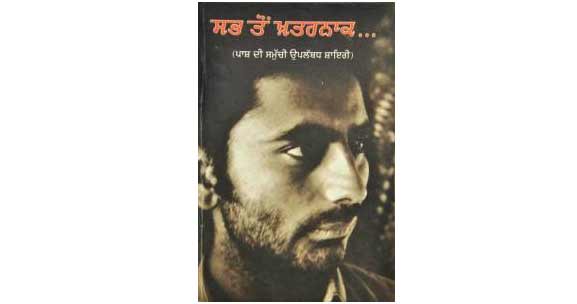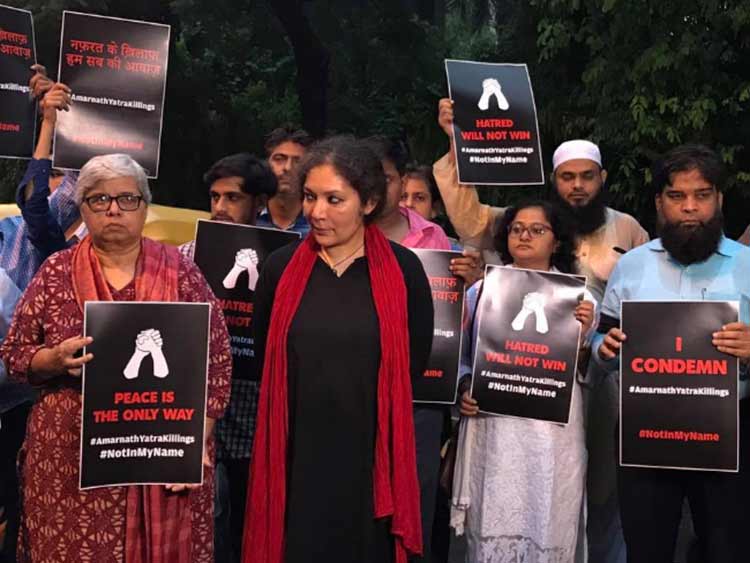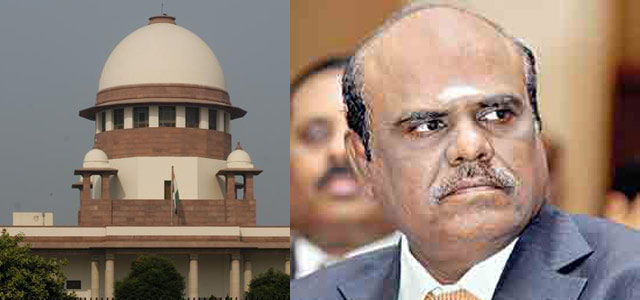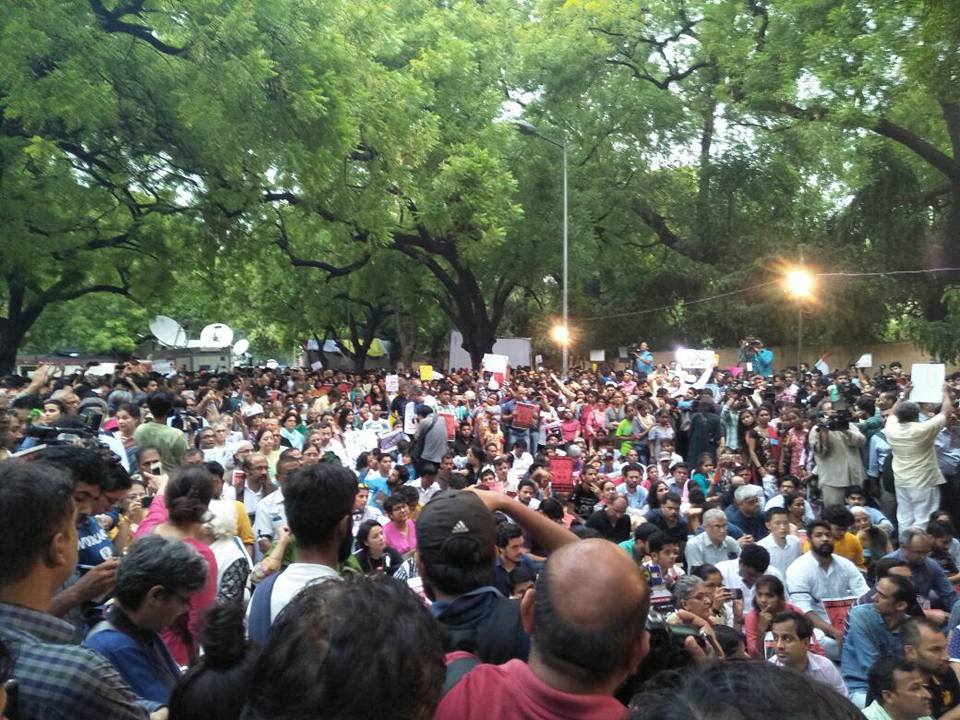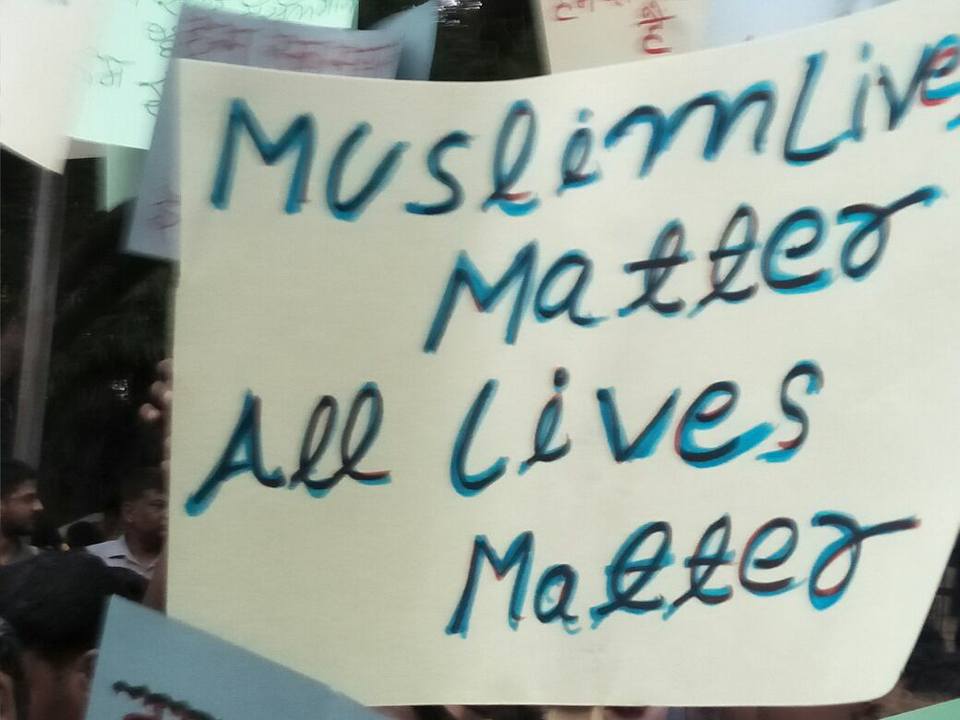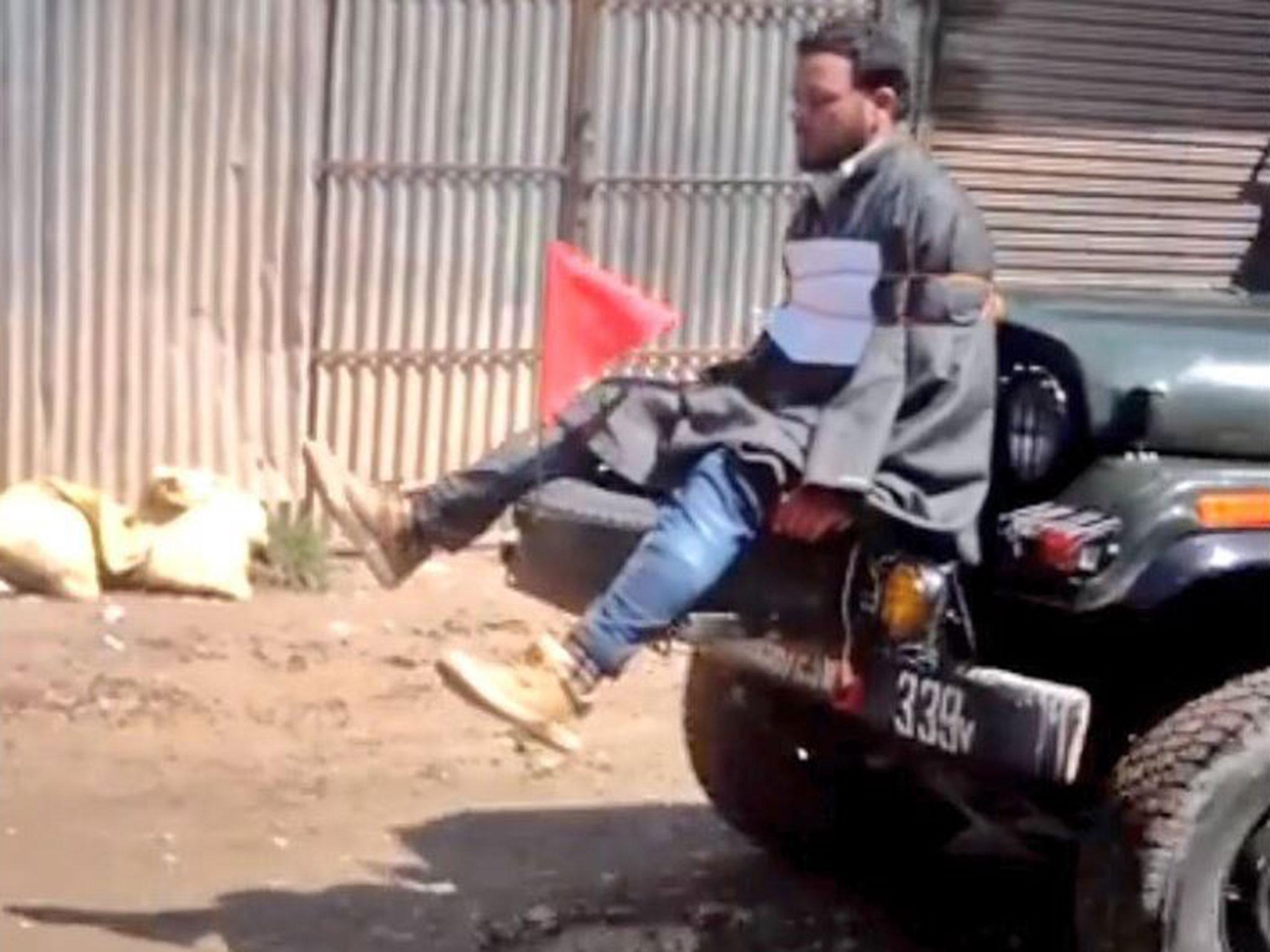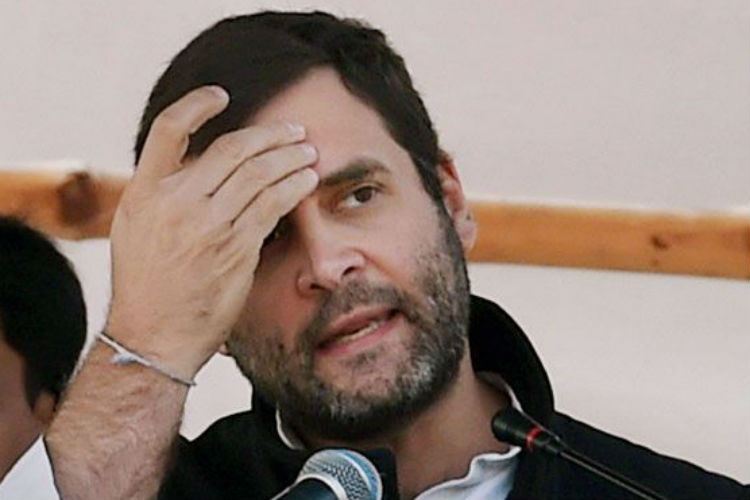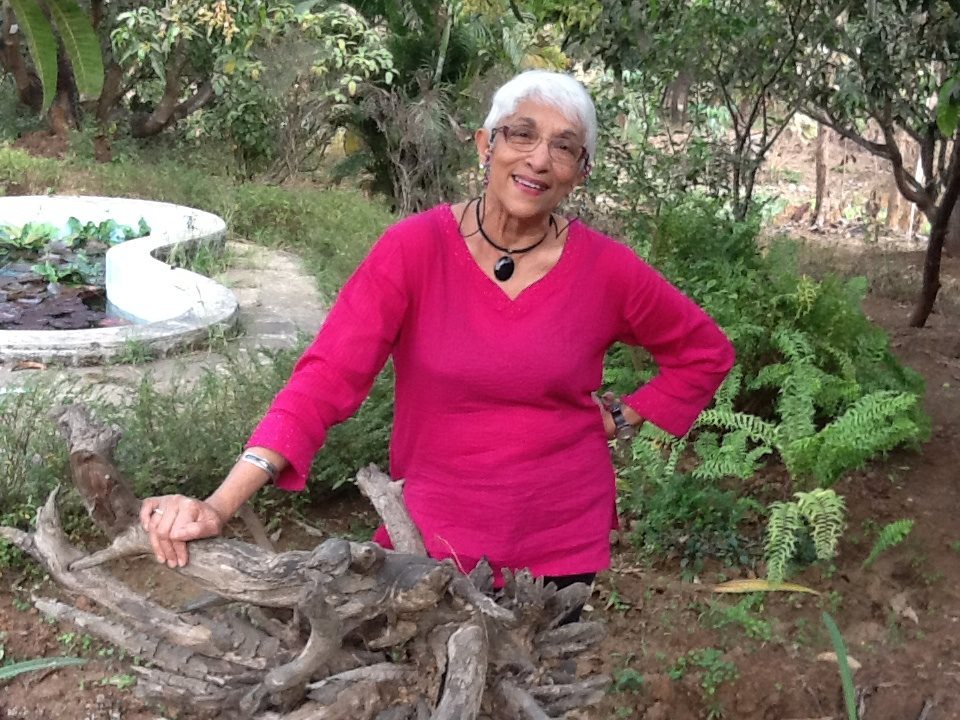
A recent article published in the Countercurrents.org by Lalita Ramdas titled
‘Service Brats, Identity and Nationalism’ raised some crucial issues through the comments by honorable serving/retired army personnel. It is felt that a wider dissemination and debate is necessary into this aspect,since it raises the fundamental issue of whether a citizen of India, Lalita Ramdas, wife of Admiral L. Ramdas (Retd.) has a right to express herself freely on issues of great public and national importance. The trigger for LalitaRamdas’sarticle was the incident of Major Gogoi tying a 24 year old Kashmiri Muslim, Farooq Ahmed Dar, a weaver from a village in Budgam, Kashmir to the front of army jeep and parading him around with the stated objective of ensuring that stone pelters would not be able to harm the personnel in the jeep – government servants, armymen and policemen – while they were on their way to safety. Lalita Ramdas expressed her view emphatically and unequivocally to the effect that use of a human shield was not correct, ethical and legal. Some of the comments by the respected retired/serving army personnel need to be quoted at length:
“Has MrsLalitaRamdas any alternative solution to offer which would have yielded the same result – no violence and 100% success – she must reveal it for future guidance of the armed forces.”
-Maj Gen Ashok Coomar
“Secondly you shouldn’t try to add weight and authority to your arguments by saying that you r a daughter and wife of an Ex navey chief. I am sorry you have no idea how indian infantry operates in kashmirvellay. To realise that you have to join one of the Inf unit in your next life.”
– Col Ajit Singh Rana
“MrsLailtaRamdas,m’am,,have you or a person like you ,ever faced an angry mob , in any city or town, in a peace situation.? I presume,no. You will at that time forget idea of human rights. You have freedom of expression, because people like Major Gogoi are up in the front protecting all of us.”
– Major General (Dr) VS Karnik (R)
“One does not expect people from Service Fraternity to express these kind of free thinking.”
– BGV Kumar
These comments give an insight into the mindset of the senior army officials.
I have not met Lalita Ramdas in the last twenty years; nor was I in communication with her – yet certain comments made in the critique by army personnel cannot be allowed to go uncontested. My memory goes back to the period 1984 when I was residing in Delhi. I am a Sikh by faith. During the November’84 genocide of Sikhs – when thousands of people of my faith were being burnt alive and the police and the ruling Congress (I) were aiding, abetting, conspiring and collaborating in the massacre – the environment in Delhi was such that no non-Sikh could dare to take out a protest march (read peace march) against the killings. Such peace marches invited clashes between the peaceful protestors and the rioters/arsonists. The non-Sikh protestors were abused and stones were pelted at them. To put things in perspective, General J.S. Arora, the acclaimed hero of the Bangladesh liberation – self- confessedly admitted publicly – that he was scared of moving out of his house in Friends Colony, South Delhi during those days. The President of India, himself a Sikh was helpless though he also happened to be the Supreme Commander of the Armed Forces at that time. On the evening of 31 October, 1984 when the President went to the All India Institute of Medical Sciences where Mrs. Gandhi had been taken for treatment after the shootout, stones were pelted at GianiZail Singh’s car. Khushwant Singh, the renowned writer was being persuaded to leave the country since Sikh lives were in danger. It was in such times that few people from the non-Sikh communities gathered their wits and decided to visit the Sikh victims of violence who were housed in make shift relief camps; these people organized themselves into ‘Nagrik Ekta Manch’ and organized the initial public protests against the anti-Sikh violence. These actions invited assaults; there were even death threats for those standing up on the side of the Sikh victims. It was in such difficult times that Lalita Ramdas, Jaya Srivastava, Gauri Chowdhry, Kalpana Mehta – easily the first few citizens of Delhi – who were prepared to put their heads on the guillotine and carry on their work without caring for their lives or limbs. Their work continued for about seven years. Lalita Ramdas was in the infantry of six hundred peace warriors who worked tirelessly amongst the Sikh victims.
Anyone of the army personnel who have raised doubts on their courage of conviction has just to visit the TilakVihar Colony, New Delhi and talk to the victims (mainly Sikh widows with their children and grandchildren) to verify for themselves about the work done by Lalita Ramdas and her associates. These women did not belong to any political party, but were clear that they had to be on the side of victims. Later they ensured the filing of hundreds of affidavits from the Sikh widows before the Justice Misra Commission which was set up to enquire into the anti-Sikh violence. These women and their other co-activists (forgive me for not being able to recall all names) received a fresh round of threats for daring to file affidavits against named Congress (I) politicians, policemen, arsonists and looters. But none of them let their self-interest and self-survival come in the way of their work – which became a cause célèbre for them. Sikhs remember this period as the third worst period faced by them in last five hundred years – the other two being the massacres during the reign of Emperor Aurangzeb (who otherwise had lots of positive traits) and the 1947 partition violence resulting in killing of Muslims, Hindus and Sikhs. It may be recalled that during the 1962 Indo-China conflict at one stage the Indian army – facing a humiliating defeat at the hands of the Chinese soldiers – left the people of North Eastern Frontier Agency, NEFA (presently known as Arunachal Pradesh) to fend for themselves. The Indian army personnel were forced to retract right up to district Tejpur in Assam. The people of Arunachal Pradesh still have disturbing memories of the period when the Indian army personnel themselves deserted them in their hour of need. At least during the 1984 violence the presence of army was there in Delhi though its role was passive and hence killings could not be stopped. Sikhs could take solace from the fact that like their Arunachali brothers and sisters the army men did not desert them. After the 1962 conflict a group of peace warriors got together under the banner of ‘Himalaya SewaSangh’ (HSS). LoknayakJayaprakash Narayan was one of the founding members. HSS helped in the healing process of people of NEFA through visits and work amongst them on a long term basis. The work continues till date.
During the 84’ violence, the army appeared on the scene very late in spite of demand by the vocal section of the Sikh leadership in Delhi since day one of the violence. The army behaved in a passive fashion; at place the arsonists and looters continued with their ‘work’ while the army men looked on. I can say the army was not responsible for saving the life of even one Sikh in Delhi at that time. As per the PUDR-PUCL Report of 1984 titled “Who are the Guilty” the role of the army was reduced to that of an “impotent observer”; in one instance a Major who was asking for directions was carrying a map dated 1974 in which the resettlement colonies did not figure.The resettlement colonies were created during the Emergency era (1975-77) of Mrs. Indira Gandhi when over seven lakh slum dwellers were forcibly evicted and left to fend for themselves on the outskirts of Delhi.
Most of the killings had taken place in the resettlement colonies numbering around four dozen. Ironically members of ‘Nagrik Ekta Manch’ were able to reach these colonies as also the nearby makeshift relief camps housing the victims of violence in Gurudwaras, colleges, schools and even near police stations. Lalita Ramdas, Jaya Srivastava and Gauri Chowdhry were already working in these colonies on non-formal education and gender issues.
Ironically the three thousand odd army personnel deputed on duty to ensure that the funeral procession of Mrs. Indira Gandhi went about gracefully were available for control of violence in Delhi only after Mrs. Indira Gandhi’s funeral was over. Thus crucial days were lost before the army could be used for the control of violence.
One has no grudge; actually even Sikh army personnel were being hounded and brutally killed while they were travelling in trains in North India. In other instances army officers in moving trains did not come to the rescue of Sikh passengers when confronted by marauding mobs. One such instance is reproduced below:
“”Get up and crawl back into the train quickly. If they notice that you’re alive, you’ll be stoned to death.”
Sixty-four-year-old Satpal Singh, a pharmacology professor at the University of Buffalo in New York state, vividly remembers the timely advice proffered by a kind man, which ultimately saved his life on the night of November 1, 1984.
Singh had just received an offer to start and head a new division at the Centre for Cellular and Molecular Biology in the central Indian city of Hyderabad.While returning to Amritsar, in the northern Punjab state, from Hyderabad, the train made an unscheduled stop at a railway station close to the city of Bhopal.
A mob of nearly two dozen people barged into Singh’s compartment and beat him unconscious.
“Two army officers in my compartment assured that they would protect me, but nobody intervened,” Singh told Al Jazeera by phone from Buffalo.
Assuming that he was dead, his body was thrown on the railway tracks.”
As yours truly also worked full time amongst the riot victims for twenty-six months certain small but pertinent observations need to be highlighted. Firstly, the six hundred odd co-workers at ‘Nagrik Ekta Manch’ comprised students & teachers from Delhi University, Jawaharlal Nehru University and Jamia University as well as activists working with social organizations in Delhi at a senior level; law students and lawyers; medical students and doctors. Most of them were from non-Sikh communities with a big chunk from the majority community. The victims who were from the lower socio-economic strata and housed in slums and resettlement colonies comprised of daily wagers or those in small self-employment occupations. At the Nanaksarrelief camp across the river Yamuna in eastern Delhi about four thousand victims including about 108 widows were housed. Victims would often during the earlier days after the violence tell the social workers that ‘monas’ (Hindus) were involved in the killings; since the vast majority of ‘Nagrik Ekta Manch’ volunteers were non-Sikhs some of the victims on later occasions started articulating that those working in the relief camps were good Hindus and those involved in the killings were the bad ones. It was through constant interaction and work extending over several months that many of the victims concluded that it was the lumpen elements who indulged in arson, loot, killings and rape and that the policemen and Congress (I) party workers & senior leader were behind the violence. At the dispensary at Nanaksar camp where yours truly initially worked as a voluntary doctor some of the victims would comment – with great surprise – that people like Lalita Ramdas, Jaya Srivastava were Hindus. Lalita Ramdas had short hair on her head by which the victims would identify her as a Hindu.
When social workers started the work amongst the victims it must have crossed their minds that there would be anger amongst the victims against people belonging to the majority community – who were initially perceived by the simple minded, innocent victims to be culprits. It should be understood that all victims could not articulate in politically correct terminology (which comes so very easily to middle class social activists). So the voluntary workers themselves at least in the initial phase, too,took a calculated risk in working amongst the victims.
It is easy to understand that most voluntary workers had to face opposition from their family, friends, neighbours, relatives in reaching out to the victims of violence. Having transcended that, they would then have to face some victims in the camp who may be angry at Hindu-looking workers. One is at pains to describe these small little things at length so that it is clear that one has to work on a long term basis before a relationship is built between the victims and voluntary workers and the environment becomes more friendly and secular.
Army men placed in situations of internal conflict have a lesson or two to learn from this experience of ‘Nagrik Ekta Manch’.
Howsoever preposterous it may appear let us have a hypothetical situation where an enterprising army man – even more enterprising than Major Gogoi – on duty during the 1984 violence gets a brilliant idea of tying a rioter or arsonist (invariably who would be from Congress (I) party) to the front of his jeep and parade around to send a message to the rioters and arsonists to disperse away. Senior army officers who are in dismay at the condemnation of Major Gogoi tying a protestor on to the front of a jeep in Kashmir should feel enlightened that tying of a trouble shooter even during the 1984 riots would not have been acceptable to the social workers. In any case the Central rulers themselves being from the Congress (I) the army would not have dared to tie say an HKL Bhagat, or JagdishTytler or Sajjan Kumar on to the front of a jeep and parade him around to ensure that the violence came to an end. Even in hindsight the idea would appear to be not only politically unthinkable but also not the one the army would have adopted; it sounds almost blasphemous.
During the 2002 anti-Muslim violence in Gujarat could an enterprising army personnel ever think of tying the henchmen of Dr. Maya Kodnani to the front of a jeep and parade them around to ensure that the arsonists and killers would move away and stop violence? Maya Kodnani was a senior BJP party member and has been sentenced to twenty eight years in jail for murder and other crimes in 2002 Gujarat riots. Could any army man have had the courage to tie a member of the Sanghparivar or BJP and parade them around to ensure that peace prevails? The whole thought is unthinkable. Not that human rights activists would have supported such an attempt by the army even in the face of genocide of Muslims.
Finally, in the present context would any Major Gogoi have the courage to tie a GauRakshak – whom Modi had described as criminals in the night in one of the rare truthful statement ever made by the Prime Minister – on to the front of an army jeep and parade him around in a situation when such lumpen elements in hordes surround a Muslim or Christian or Tribal or Schedule Caste Hindu and assault him to death on the assumption that he was a beef eater!
One thing which is pertinent to observe is that in spite of so many voluntary workers doing their bit for the victims the leadership of the work was always a collective one. Equally true ‘peace warriors’ like Lalita Ramdas and six hundred more volunteers were able to put the broken lives of thousands of victims back in place and into the mainstream. I salute them belatedly. But for them some amongst the victims would have joined the ranks of separatists in Punjab demanding a theocratic state of Khalistan; it is this role of these selfless workers which needs to be made the ideal for army men posted in conflict areas like Jammu & Kashmir.
Personally as a Sikh I was shit scared of moving out of my house till 3rd of November, 1984. During the first three nights after Mrs. Gandhi’s assassination I had my surgical knife, presented by a doctor friend as a memento when I left LokNayakJayaprakash Narayan Hospital, New Delhi in 1981, ready; I was clear in my mind that if the mob descended on our house I would personally kill my sister with this knife before the rapists could set their eyes on her. The knife never got to be used. On 3rd of November volunteers of ‘Nagrik Ekta Manch’ escorted me to work in the relief camps where I could put my skills as an Orthopaedic Surgeon to some use. After working for about twenty six months amongst the victims, I had made a decision to stay unmarried. I did not want to leave an extra widow and orphans to be rehabilitated by peace warriors in the next round of anti-Sikh violence. Of course like all human beings I had till then also wanted to love, get married and raise a family. Life changed after 1984 riots – for all times to come.
In any developed democracy groups like ‘Nagrik Ekta Manch’ should collectively have been awarded the highest civilian award by the President of India. Anyway, my humble tribute to the six hundred peace warriors with due apologies to Alfred, Lord Tennyson:
“The Charge of the Peace Warriors”
Half a league, half a league,
Half a league onward
All in the valley of Death
●Walked the six hundred
Forward the Peace Warriors
Charge for the arsonists and rioters
Into the valley of Death
Marched the six hundred
…
…
Abuses to right of them
Stones to left of them
Trishuls in front of them
When can their glory fade?
…
Honour the Peace Warriors
Noble six hundred
- Trilokpuri, a resettlement colony where over six hundred men were burnt alive and had indeed turned into a valley of death.
P.S. This short piece takes into account the role of one major formation viz ‘Nagrik Ekta Manch’ but there were lots of other big and small groups e.g. ‘Sampradayikta Virodhi Andolan’. There were religious groups; other NGOs and individual efforts. But in all fairness ‘Nagrik Ekta Manch’ or their constituent members – Ankur, Action India, Saheli – continued to work for the rehabilitation of riot victims extending over several years.
Dr. P.S. Sahni is a member of PIL Watch Group. Email: pilwatchgroup@gmail.com
